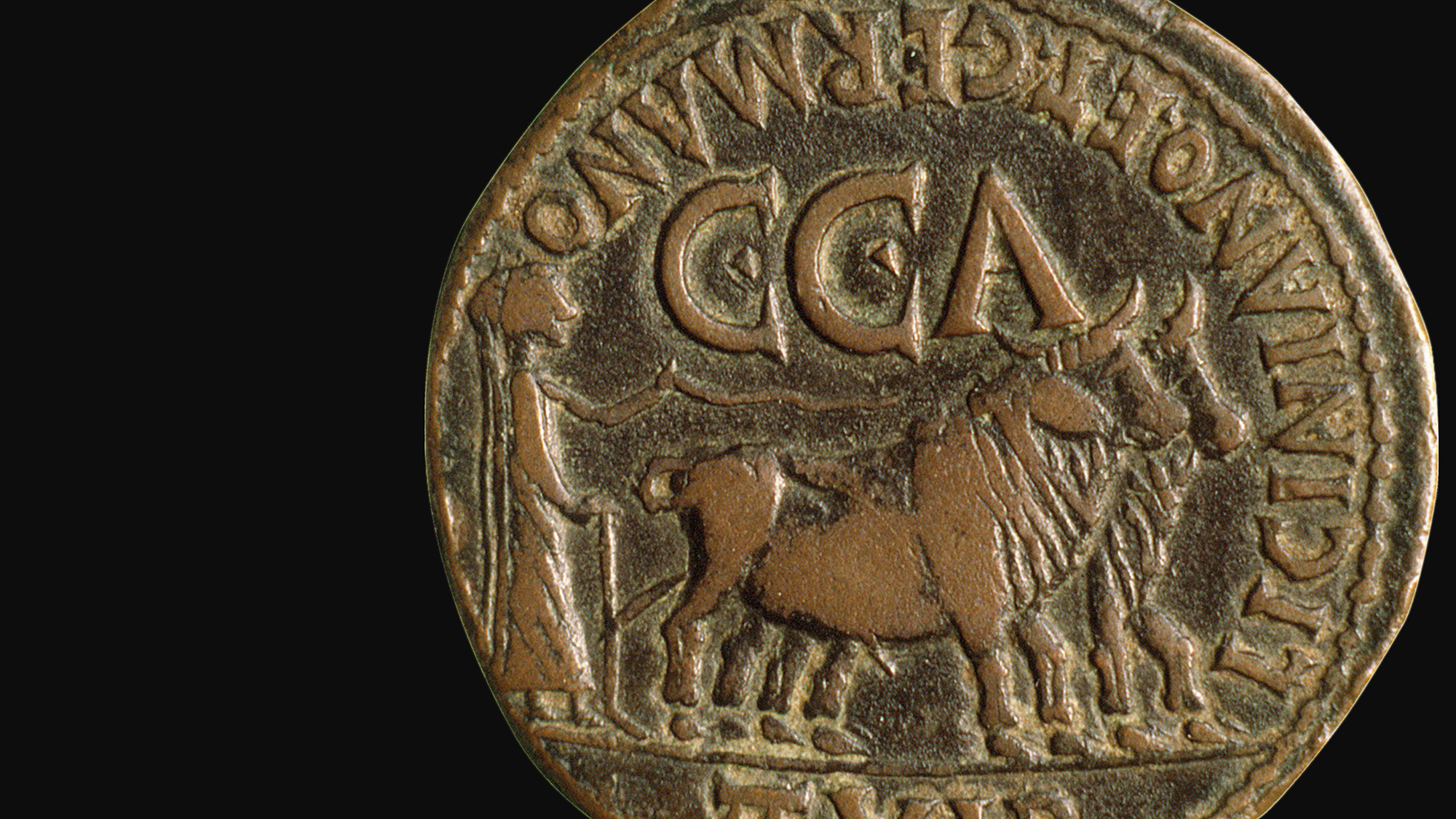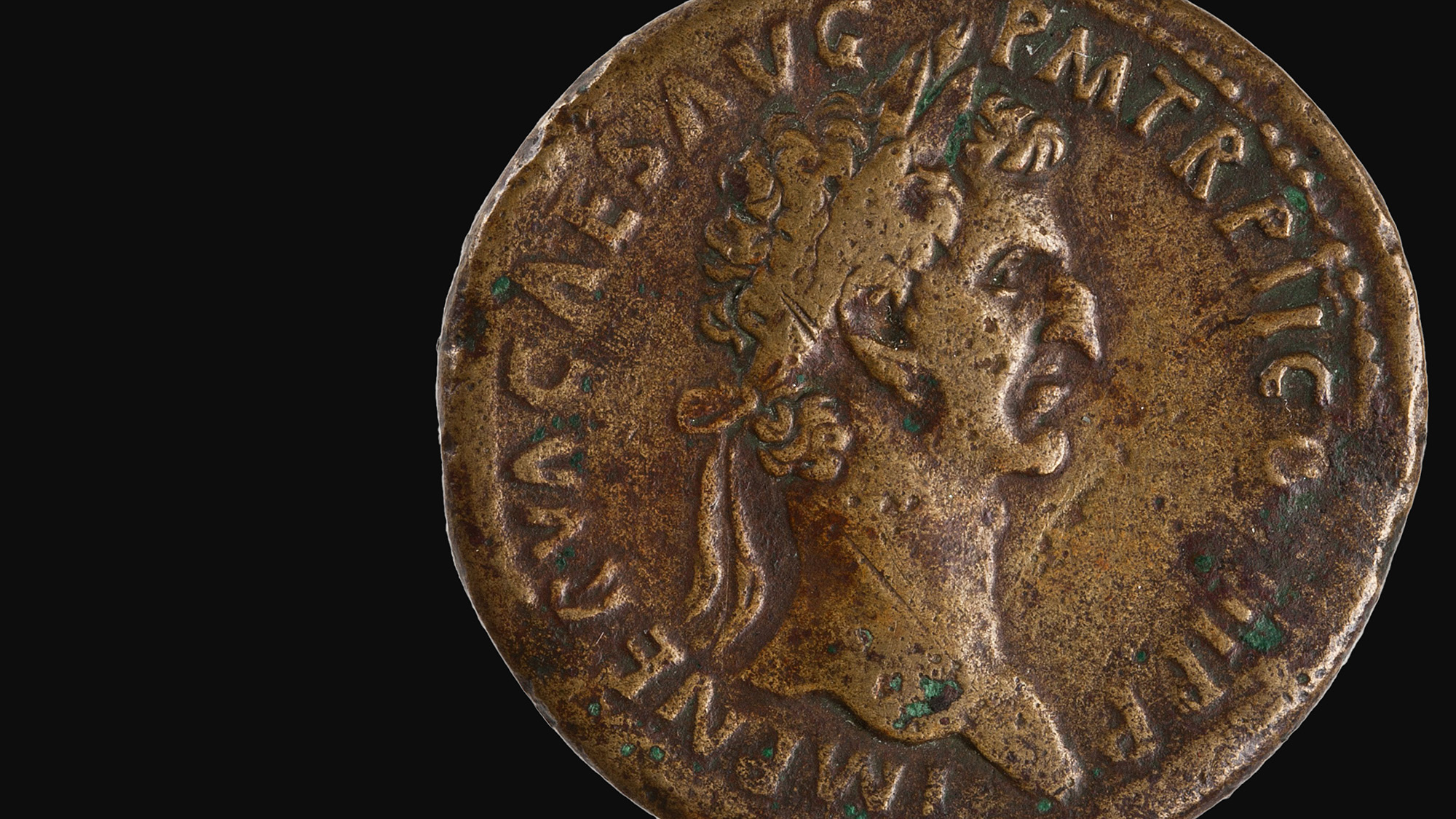Cash and Carry

The American Numismatic Society cabinet contains a remarkable collection of Chinese coins and currency ranging from early bronze spade money (Fig. 1) and so-called “ant-nose” coins derived from cowrie shells down to more recent issues of the People’s Republic of China. Within this long parade of money, a watershed moment took place in the late third century BC when Qin Shi Huang, the first emperor of a unified China (220–210 BC), introduced a new cast bronze coinage to be used throughout his empire. The coins, known in Chinese by their denomination ban liang (“half tael”), were circular in shape, like the contemporary coins of Greece and Rome, but included a square central hole that permitted them to be strung on cords for easy storage and transportation in an age before pockets (Fig. 2). Over the centuries the basic form of the ban liang was used and reused for new imperial coinages of different names and denominations like the wu zhu (“five-zhu”) and tong bao (“circulating currency”). As European trade with China expanded in the Far East in the seventeenth century, such coins came to be known in English as cash—a term derived from kaasu or kasa, South Indian (Dravidian) words for “money” often referring to a coin of small denomination.

While cash coins are interesting in their own right, not only in their role as currency, but also in Chinese tradition as talismans for the living, medicine for the sick, and assistance for the spirits of the dead. They are also remarkable as part of a growing corpus of Eastern coins brought to the shores of the United States and Canada early in the histories of these countries, largely unnoticed by the numismatic community. There is always something exciting about a coin discovered in a wrong or unexpected place. When this happens there is almost invariably a good story that goes with it.
Chinese cash coins have been recovered from Indigenous archaeological sites of the maritime fur trade period (1778–1850) along the northwestern coast of North America stretching from Alaska through British Columbia and into the contiguous states of Washington, Oregon, and Idaho. The coins were already being traded to Indigenous peoples of British Columbia by the late 18th century, as indicated by a meeting between the Spanish explorer Jacinto Camaño Moraleja and the important Nuu-chah-nulth (Nootka) chief Taglas Cania in 1792. On this occasion, Taglas Cania is reported to have arrived at the meeting wearing his finest apparel, which included a coat and trousers adorned with cash coins similar to the Qing (Manchu) Dynasty tong bao depicted below (Fig. 3). These were attached to his clothing like buttons, but seem to have been intended to announce the presence of their wearer by the pleasant tinkling sound they made when they struck against each other as he moved. The coins and their sound enhanced the status of the wearer, visually illustrating the chief’s important trade connections and providing him with his own theme music on occasions of significance. It has been claimed that the Tlingit peoples of Alaska sewed numerous cash coins to leather coats and vests not only as status symbols, but to serve as body armor in their conflicts with other tribes and Russian traders in 1802 and 1804. However, the military aspect of such clothing has been disputed, with some recent commentators arguing that it was primarily used as ceremonial garb. A number of Tlingit cash-encrusted jackets and vests can still be seen in public collections such as those of the American Museum of Natural History and the Canadian War Museum.

It is unclear exactly how long before the arrival of Caamaño the Indigenous peoples of the north west coast of North America developed their taste for Chinese cash, but 1788 seems most likely. In the spring of this year, the English captain John Meares sailed from the Chinese port of Guangzhou (Canton) with a complement of Chinese crewmen, and reached Nootka Sound on Vancouver Island. There he established a post for trade with the indigenous Nuu-chah-nulth peoples despite lacking permission from the East India Company to do so. It has been suggested that Meares’ Chinese crewmen may have begun trading cash coins to the Nuu-chah-nulth when they discovered the attraction of Indigenous peoples to articles made from copper—copper and brass pots had long been staples of European trade with the First Nations of North America—and that this chance trade became regularized in subsequent visits by English traders. On the other hand, it is just as possible that Meares purposely included cash coins in his cargo when he sailed out of Guangzhou in 1788 with the intention of trading them to Aboriginal peoples as trinkets in return for much more valuable seal skins.
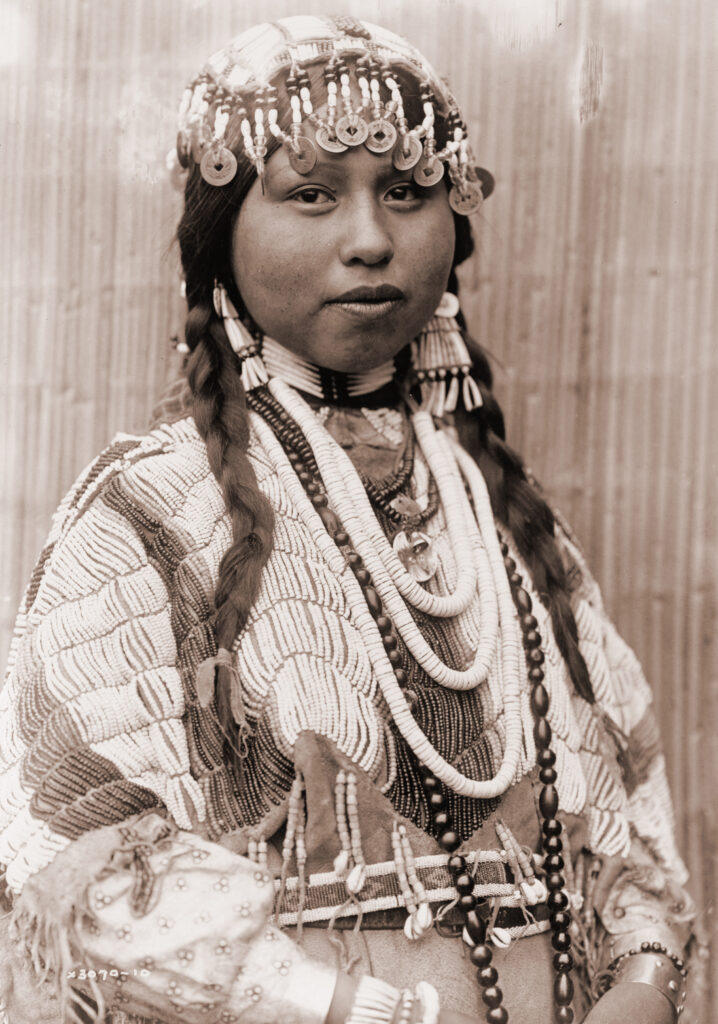
Chinese cash coins remained a popular item of clothing decoration among the Indigenous peoples of the north western North America into the 20th century (Fig. 4), although by this time the supply brought by maritime fur traders was supplemented by coins carried by the large numbers of Chinese immigrants who came to work on the great transcontinental railways built in the United States and Canada in the 1860s and 1880s, respectively. Cash coins seem to have been preferred for adornment in part because they came ready for stringing and because they were obtained fairly easily. With a value equal to about one tenth of a U.S. cent, Chinese cash had virtually no use as money in North America. Nevertheless, when cash coins were not available, other coins, like U.S. dimes and half dimes (Fig. 5), were pierced by for the same decorative purpose.
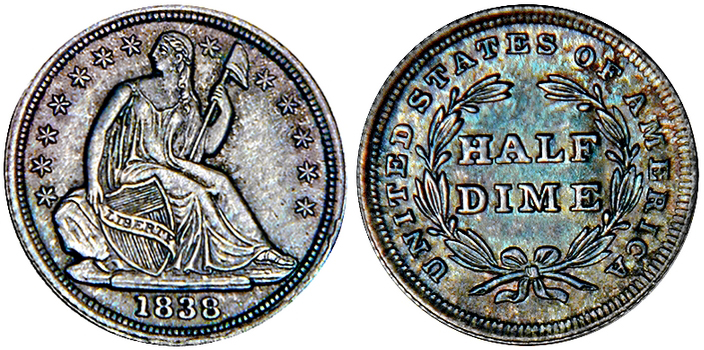
It is worth noting that the custom of wearing coins as clothing adornment connects the Indigenous peoples of northwestern Canada and the United States not only to the Far East through their use of Chinese cash, but indirectly also to the Middle East. There many Islamic cultures had a tradition of piercing coins to be worn as part of a bride’s costume (most typically her headdress) on her wedding day. The ANS collection includes hundreds of examples of coins that have been pierced, some of which almost certainly received their holes in this wedding context (Fig. 6). It is from this custom that the term sequin (an English corruption of zecchino, the Italian name for the famous Venetian gold ducat and its imitations) enters modern parlance as the small, shiny disk-like decorations most frequently found sewn on to certain kinds of glamorous women’s apparel.
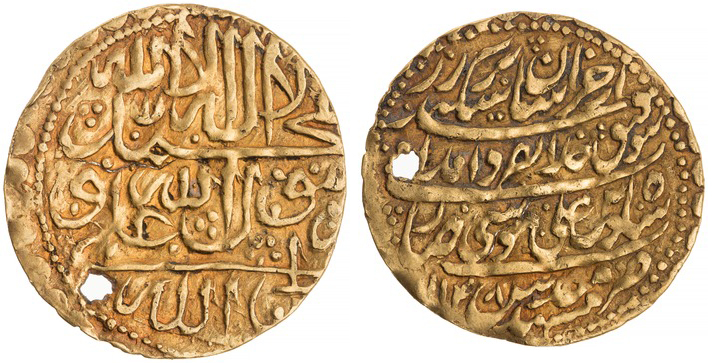
Coins found outside of their expected areas of circulation and put to unexpected uses are always a source of great interest. The case of Chinese cash in northwestern coastal North America is no exception, as the coins document the long-distance maritime trade between European traders operating from Chinese ports and Indigenous peoples and highlight the cross-cultural uses of coins as part of clothing. The modern states of Canada and the United States have prided themselves on being cultural mosaics and melting pots, respectively. The more attention paid to foreign money found in North America reveals these terms to be relevant just as much to coins as to people.


